On International Mission Trips, Blue Jays Live with and Serve Others
While school may be out for the summer, Jesuit juniors are conducting their 100-hour service projects at locations both far and near. Two teams of Jesuit students recently returned from international mission trips to the Dominican Republic and Panama, and both groups contributed thousands of collective hours of physical labor with Courts for Kids.
Jesuit students and their counterparts from the Dominican Republic and Panama both recounted the meaningfulness and significance of their extended interactions with one another.
“From this community, I learned that the value of even the most basic things like food or a hard day´s work is subjective,” said rising senior William Perkins. “To us, it is just a basketball court; to the community, it’s the culmination of four years into a beneficial community project.”
“For me it was an excellent experience,” said Maria Adelaida Ojo, a resident Boca de las Minas, a Panamanian city in which one of the groups served. “We shared anecdotes of our community and they taught us also their anecdotes. It was something totally wonderful.”
The following accounts from Jesuit students and chaperones tell the story of these meaningful connections and life-changing experiences.
Dominican Republic
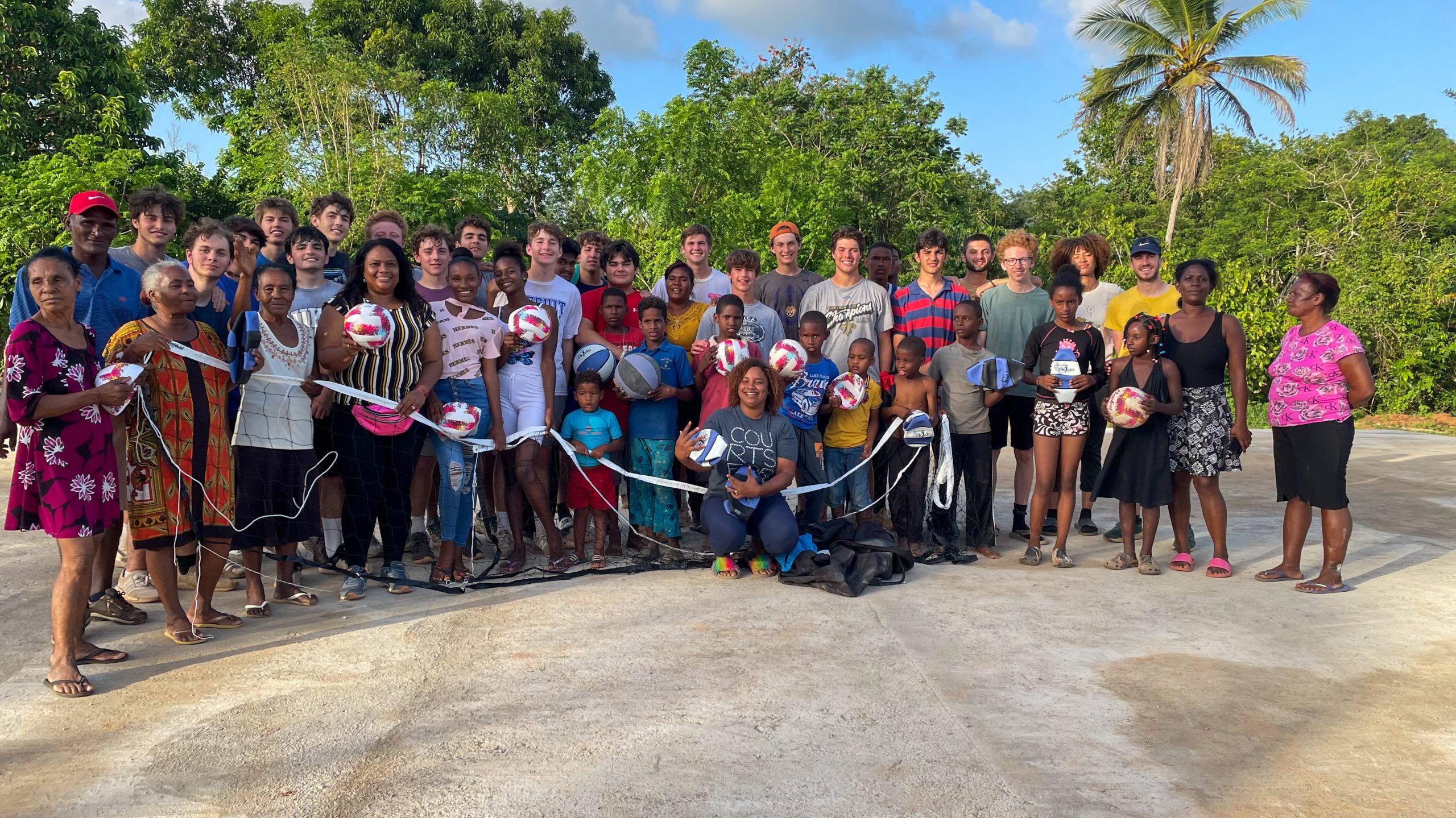
Nineteen rising seniors accompanied by two teachers, math teacher and Jeff Miraflor, S.J. and theology teacher Daniel Augustine ’15, embarked on a service trip from May 29 to June 7 to the village of Batey Frias, a rural farming community in the Dominican Republic. The local community expressed the desire for a basketball court, so Courts for Kids connected them with Jesuit to help provide laborers for the project.
The project proved to be one of the more difficult ones compared to other projects managed by Courts for Kids. The court needed to be elevated three feet above the ground, and the first task was to fill the foundation enclosed by a cinderblock perimeter. After eight truckloads of dirt, the combined crew of the local community and Jesuit students quickly realized that the foundation needed much more dirt than what was available. It was common to hear the foreman yell, “We need more dirt!”—and everyone would stop what they were doing and begin to search for more, even going so far as to take clay from the natural surroundings.
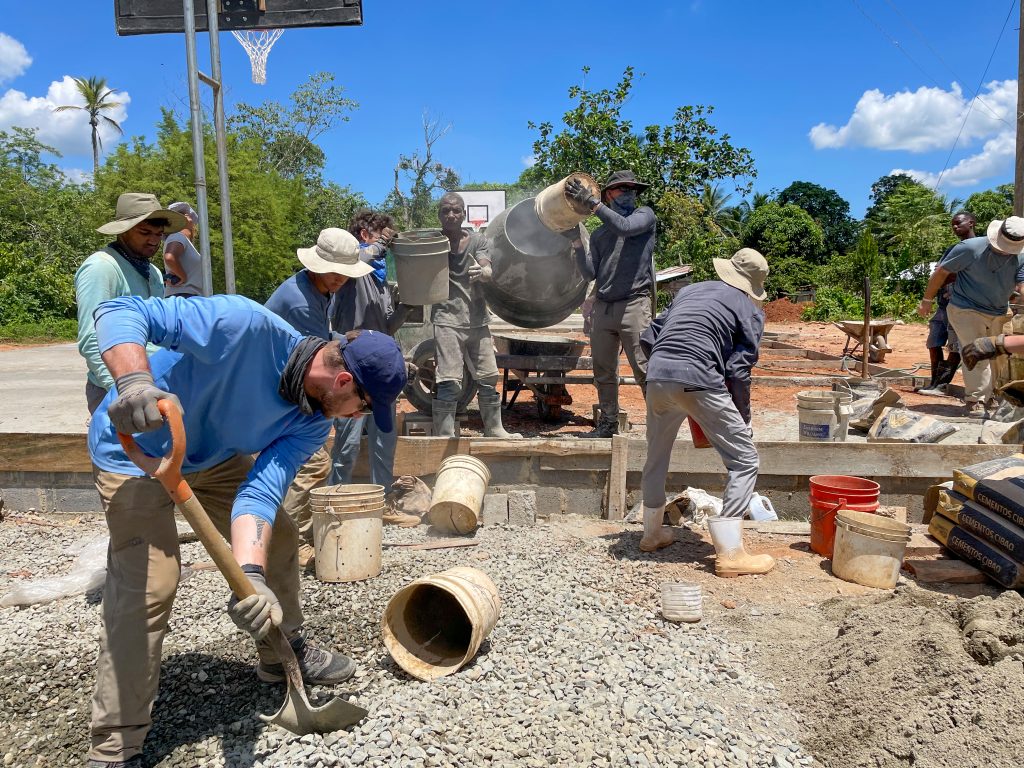
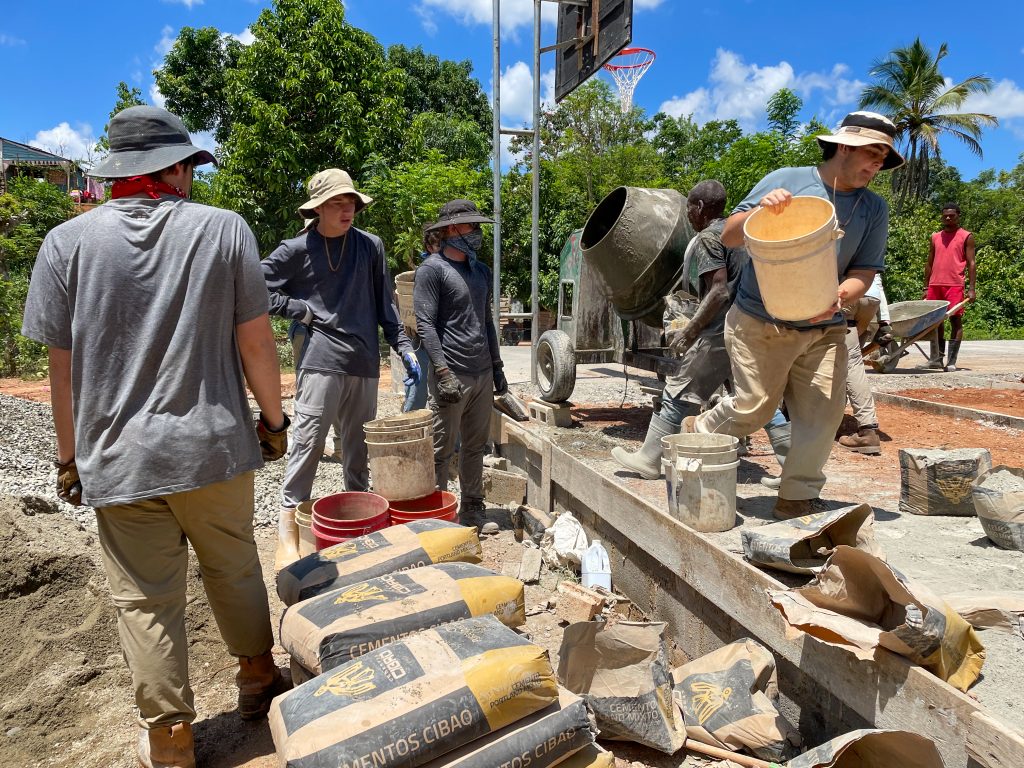
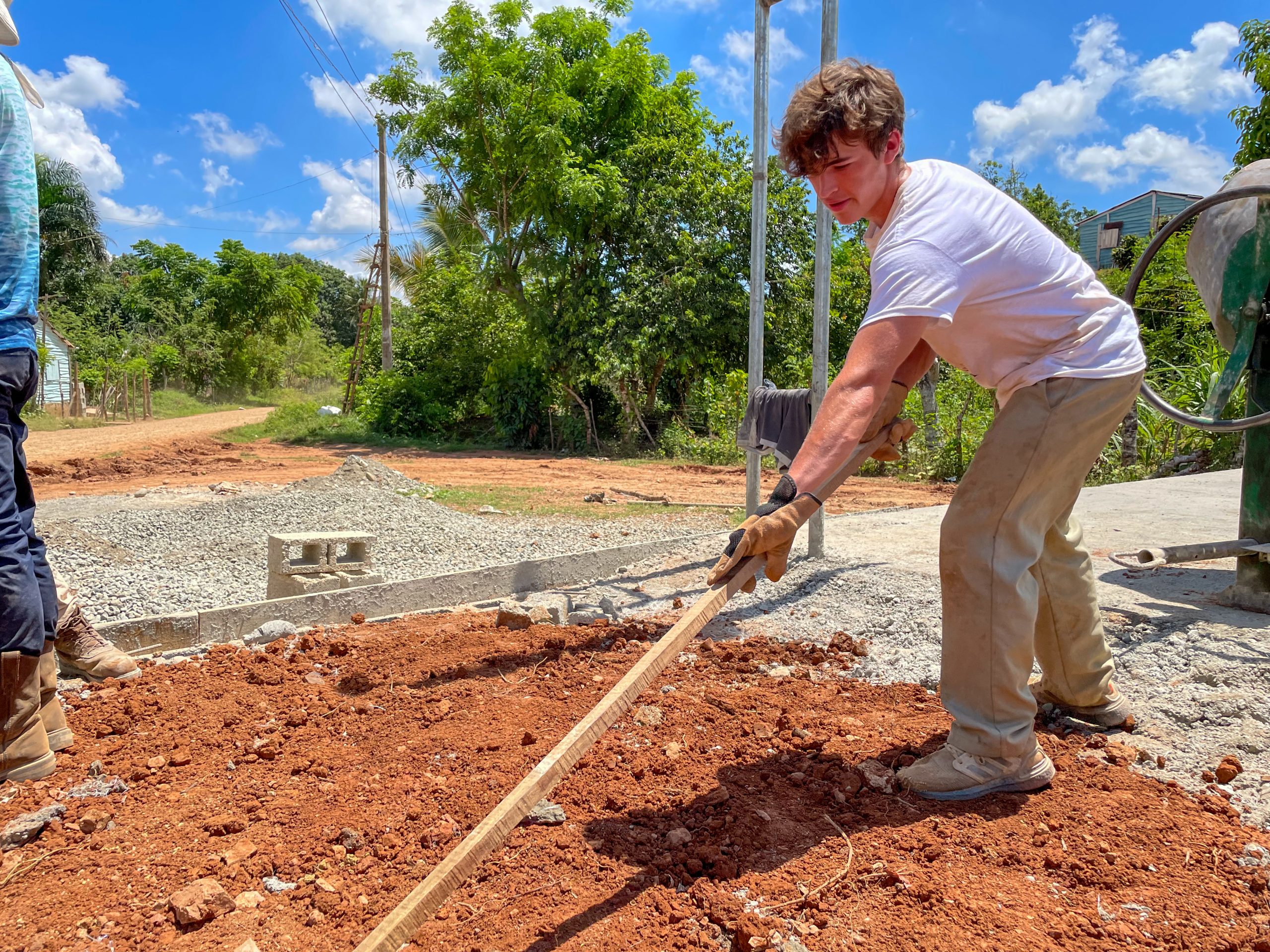
The endless search for more dirt subsided, and concrete began to flow. Everything had to be done manually on-site, and that included mixing concrete. Bucket lines formed towards the mixer—one for gravel and the other for sand—while a few brave souls stood by the mixer throwing in the ingredients all while being splashed by the concoction. Two workers on the wheel barrels would transport the concrete from the mixer to the slab being poured—also a very dirty job.
The project was completed after six days of work and was inaugurated on the seventh day—appropriately on a Sunday—with a basketball tournament accompanied by cake and punch. Reflecting on the difficulty of the project, the students would not have had the motivation necessary if not for the hospitality shown by the local community in welcoming them into their homes, feeding them three times a day from what they had available, and showing them the beauty of the farmlands and rivers of Batey Frias.
“As the days go, the work got tougher and tougher,” Jesuit senior Joshua Bastidas said. “We had to find the strength to keep going. But at the same time, every day became more and more fun. Something about playing and working with the locals brings a certain sense of joy that we all loved.”
Panama
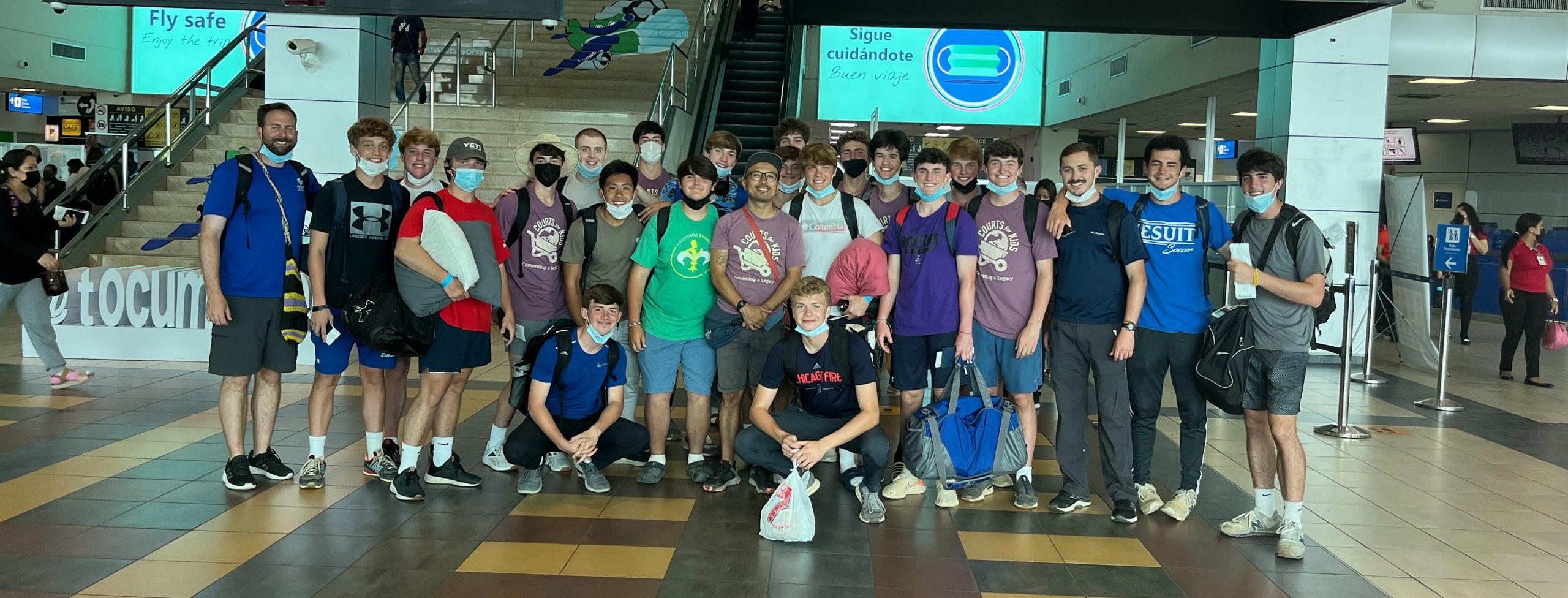
Led by theology teacher Roger Bacon ’10 and Spanish teacher Scout Serpas ’13, another group of students traveled to Panama.
On a typical day, the group would wake up to birds chirping and start with a filling breakfast accompanied by locally ground coffee. Walking to the site of the new court, they would then meet their Panamanian co-workers, who were always seemingly hungry to get to work. The work was difficult but fulfilling: loading rocks and sand into five-gallon buckets, tossing around 100-pound bags of cement, and filling a concrete mixer took a hefty amount of physical strength but also a great deal of patience.
Lunch followed with some rest during the occasional rain storms, but then it was time to head back to work. A home-cooked dinner typically followed soon after the finished day of work, and the evening wrapped up with trivia games to determine who would earn the right to shower first.
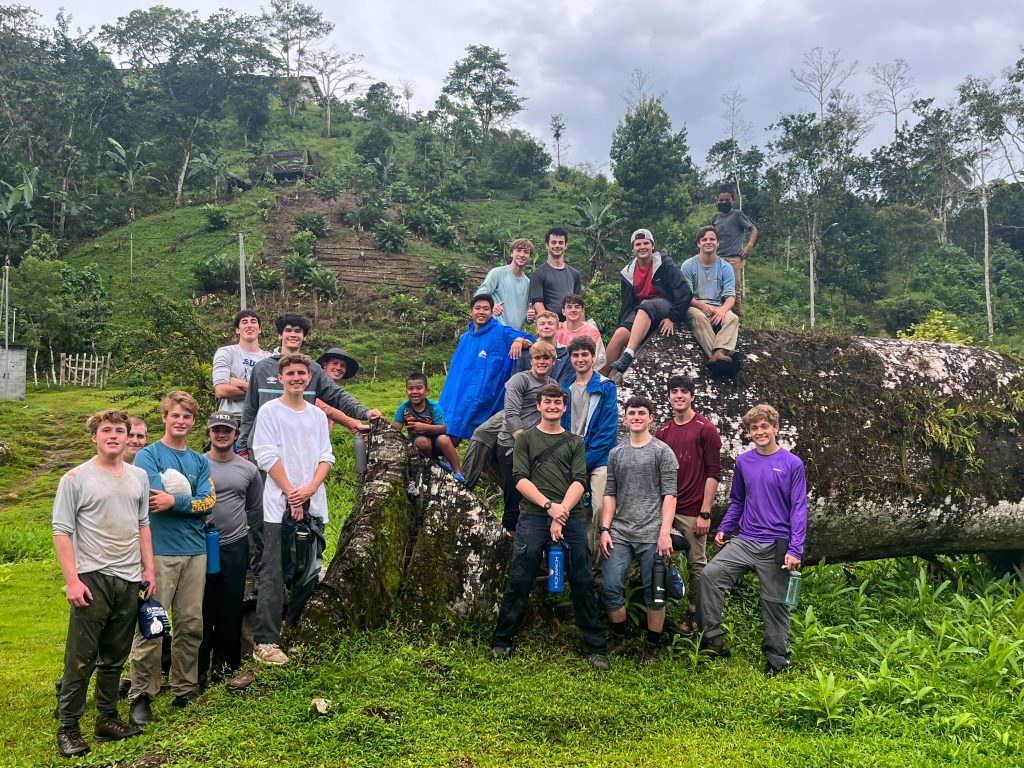
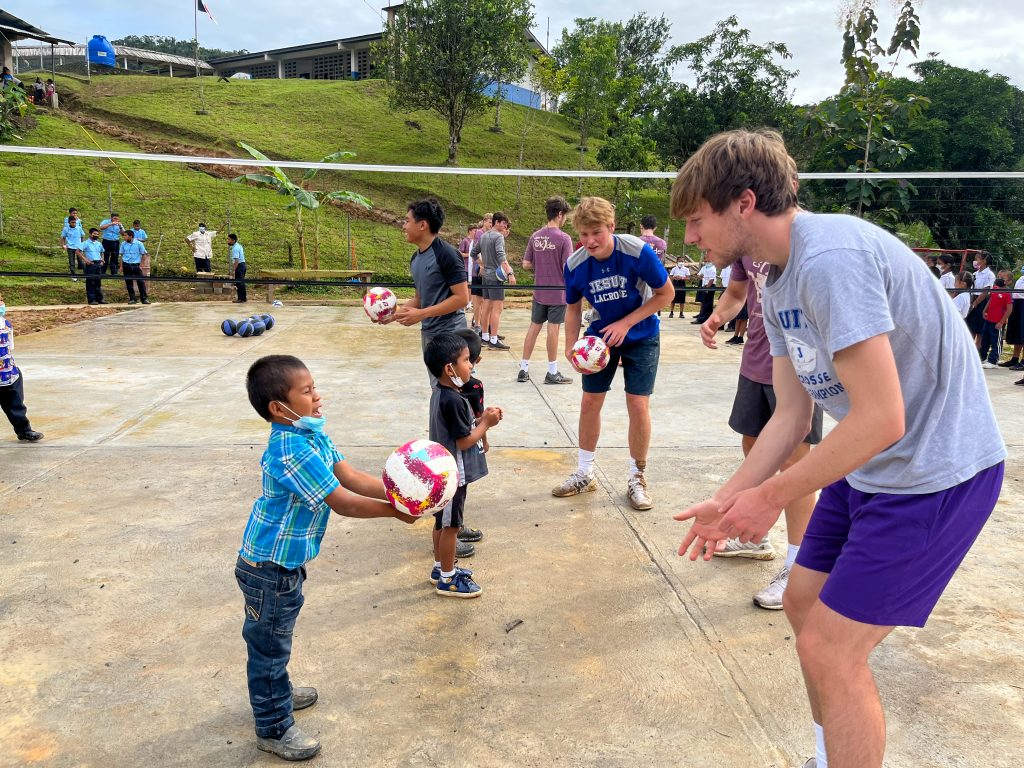
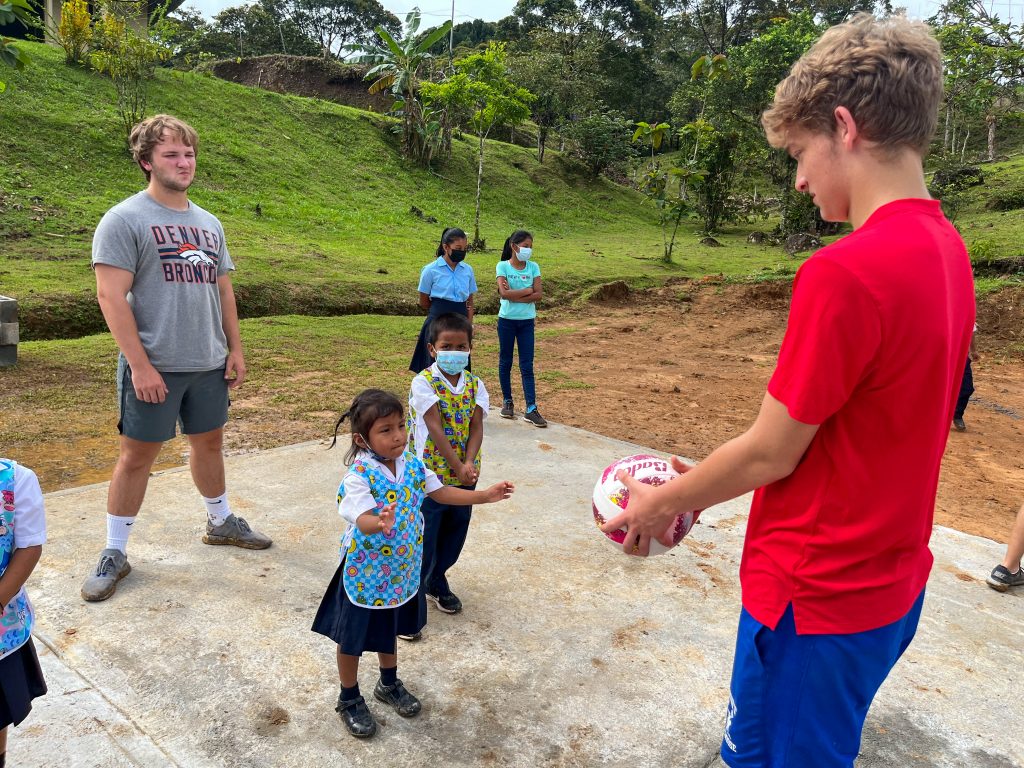
After showering off the concrete dust and sand, the whole group engaged in nightly reflections and discussions about their daily challenges.
The days spent off the court were culturally exciting. Blue Jays learned about how residents made a living (the cultivation of cilantro is a major part of the local economy) and gained an appreciation for the plethora of edible plants and artisanal products made in Panama.
“I am both proud and humbled to have been able to represent Jesuit High School and the United States abroad,” Serpas said. “It wasn’t all that hard with such a wonderful group of young men standing with me. Their ability to step out of their comfort zone, put the needs of others first, and accomplish their goal of building that court kept a smile painted across my face.”
The international excursion provided an opportunity to give back to a struggling community, and many students found deeper clarity about themselves and the world around them.
“Bocas de las minas has become our home away from home,” Jesuit senior Aidan Couvillon said. “Building the court seems like a small speck in the memories which we built throughout the week. Between meeting amazing locals, jumping into waterfalls, climbing among the valley, and bathing in the river, I feel as though I experienced a small piece of what it means to be Panamanian.”
For more stories from the trip to Panama, read the Courts for Kids article on the trip.